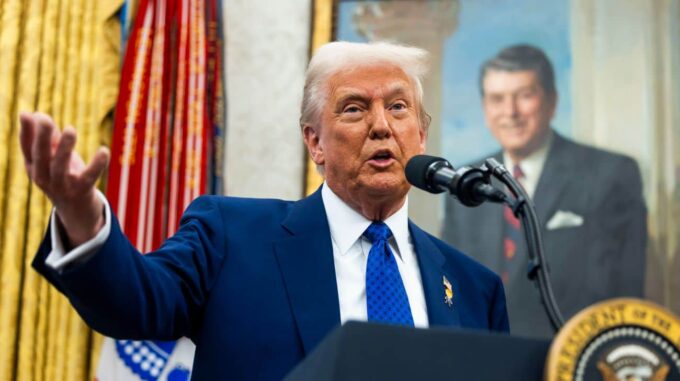Washington and London sign a historic trade agreement: the first step towards restoring global trade after the tariff war

In an unexpected and highly significant move towards reestablishing trade relations between the United States and the United Kingdom, U.S. President Donald Trump announced the signing of the first agreement after a prolonged tariff confrontation with one of its key allies — the UK. This happened in the first week of May and has been widely covered in global media, as it essentially opens a new chapter in international trade, holding strategic importance for both nations. According to information shared by Trump from the White House's Oval Office on May 8, the deal with the UK was described as "breakthrough" and will serve as the first step toward lifting tariffs and creating new opportunities for businesses in both countries. The American leader emphasized that the U.S. views this agreement primarily as “one of the closest and most valuable alliances,” as well as an important milestone in restoring international trade after a lengthy tariff war initiated by the U.S. against several trading partners. Trump pointed out that this agreement involves significant expansion of American exports to the British market—particularly in agriculture and industry—amounting to billions. Additionally, the parties reached agreements on removing or reducing non-tariff barriers that previously hindered trade, as well as simplifying customs procedures for goods entering Britain. Trump mentioned that many final details are still being negotiated, but most of the main points have already been practically agreed upon and are awaiting final approval in the coming weeks. Amid these developments, UK Prime Minister Rishi Sunak called the signed deal "historic" and expressed confidence that it will promote active trade relations both between the two countries and within them. According to him, the agreement will serve as a significant boost for business development, further market integration, increased trade volumes, and as a symbol of a new firm cooperation in the post-Brexit era. This initiative is the first major agreement announced after Donald Trump imposed sharp tariff pressures on several trading partners as part of his trade policy. Initially, high tariffs were introduced on a range of goods from the European Union and other countries, but later some of these measures were partially suspended, offering other nations the chance to negotiate new trade terms with Washington and avoid more restrictive measures. However, the situation regarding tariffs remains tense: the EU is now considering imposing its own tariffs on American aircraft and automobiles, attempting to persuade the Trump administration to lift existing or planned tariffs against the EU, which adds further tension to the global economy. Therefore, moving towards a more liberalized trade relationship between the U.S. and the UK is a critically important signal amid growing global economic uncertainty. In conclusion, this agreement marks the beginning of a new era in international trade, leveraging the potential of alliances and economic cooperation, and provides hope that the world economy can move beyond tariff confrontations and countries can find new pathways for collaboration. For the U.S. and the UK, this is not just a commercial document but a strategic step toward building a more open, transparent, and mutually beneficial trading environment.

